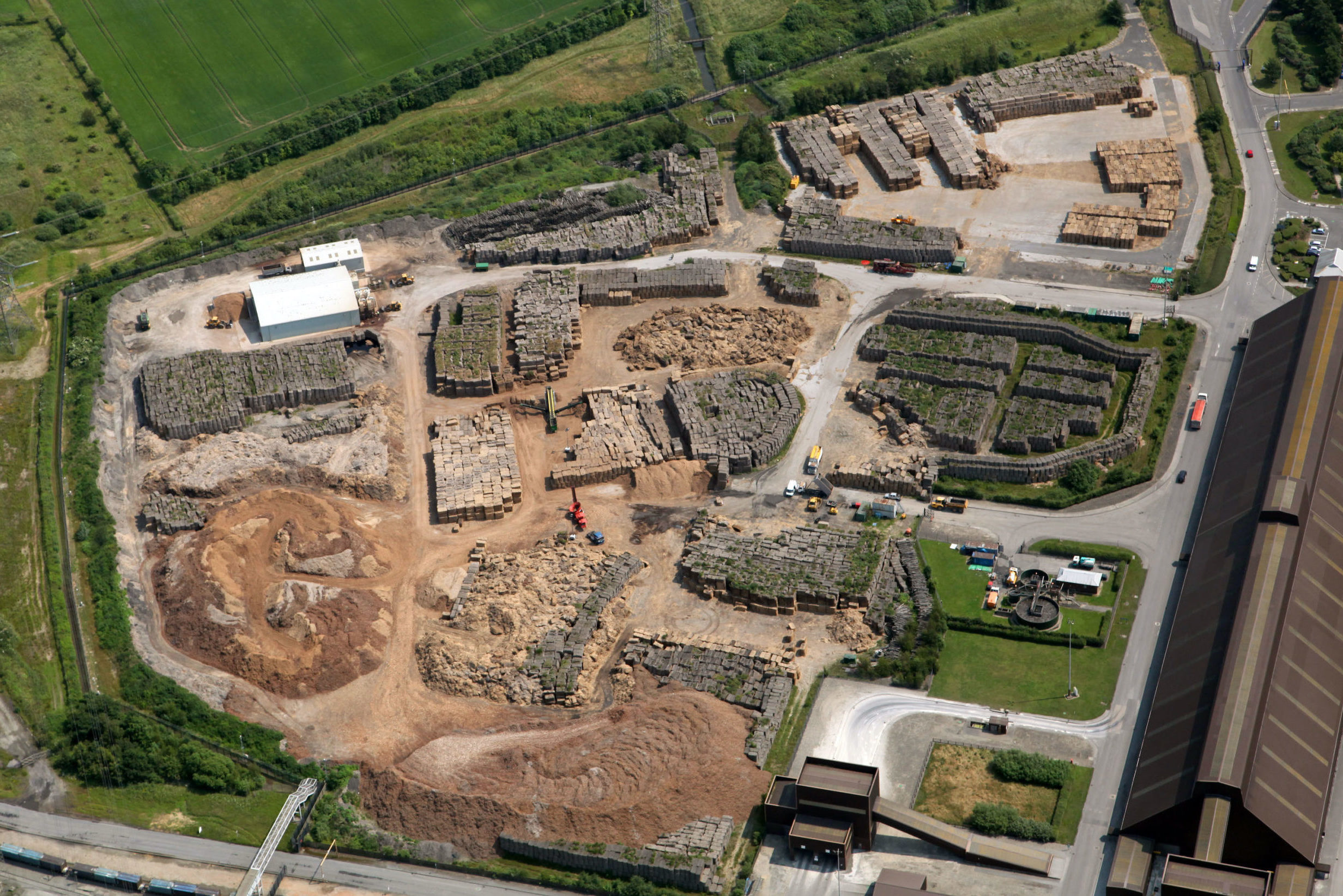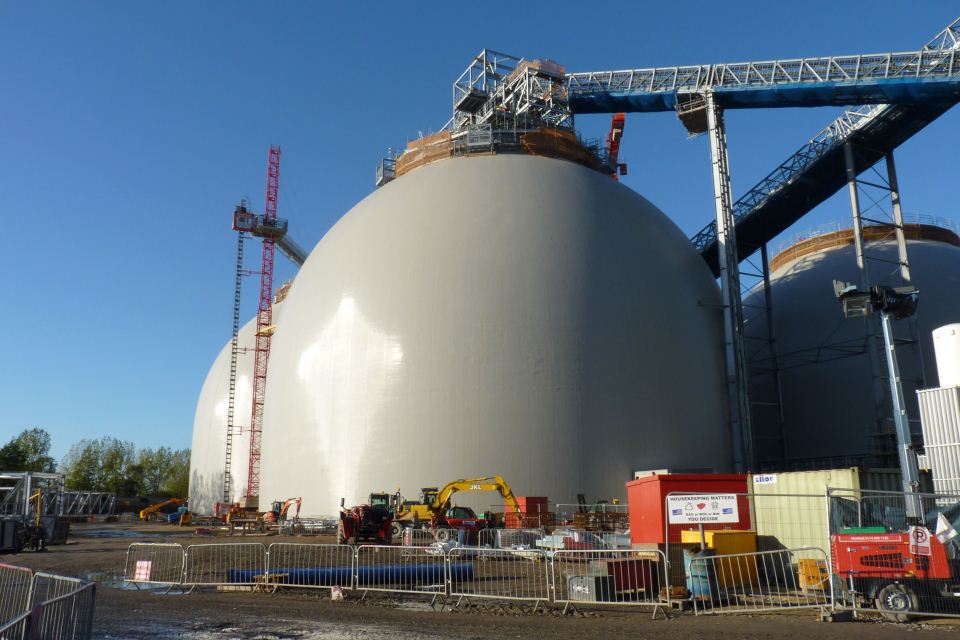It sounds like magic, and perhaps it is. Imagine a power station whose operation sucks carbon dioxide from the air instead of emitting it. The more fuel it burns, the more it reduces the levels of greenhouse gas in the atmosphere. Imagine such power stations spread across the planet, generating our electricity while cooling the air. Our energy and climate problems would both be fixed in one leap.
Read more
Want the full picture? Explore our geoengineering hub to read more about this topic.
That was the promise I was given one cold autumn morning standing outside Drax, Britain’s biggest power station. Its CEO Will Gardiner believes it will be “carbon-negative” by 2030. Similar promises are being quietly made in other countries, including China, where a pilot plant is at work in Inner Mongolia.
This is the technological dream that underpins a conviction among some scientists from the UN’s Intergovernmental Panel on Climate Change (IPCC), who believe places like Drax could soon be drawing carbon dioxide (CO2) out of the air on a scale necessary to pull the world back from catastrophic warming above two degrees Celsius later this century.
It works by changing both what goes into the power station, and what comes out. By switching the fuel burned from coal to “renewable” wood; and by capturing the resulting emissions so they never get back into the air. They call it BECCS, for bioenergy with carbon capture and storage.
Burn, bury, grow, repeat
Anyone travelling up the east side of England will have seen Drax, with its 12 giant cooling towers. It supplies a tenth of Britain’s electricity. Until recently, it did this by burning coal mined from the nearby Selby coalfield. But now it mostly burns wood pellets imported from the American Deep South. The final boiler will be converted in 2021.
Drax claims this makes the plant carbon neutral. Burning wood still generates CO2, of course. But the theory is that every tree cut down in an American plantation to fuel the power station’s boilers will be replaced by another one. And, as it grows, the new tree will eventually soak up as much CO2 from the air as was released by burning the old one. That – give or take the emissions from harvesting the wood and shipping it across the Atlantic – means there are overall no carbon emissions, a proposition accepted by both the British government, the European Union and UN carbon analysts.


But that is just the start. The next step is to turn Drax from carbon-neutral to carbon-negative by capturing that CO2 before it goes up the power station’s stack, liquefying it to reduce the volume and burying it out of harm’s way. Carbon capture and storage (CCS) is technologically proven at a small scale but has never been hooked up to a real power station to capture the millions of tonnes of CO2 they produce annually. That is a big step further. And potentially very expensive.
Some see the entire enterprise as “greenwash” to keep polluting power stations in business – part of the problem, not the solution. Nonetheless, pilot CCS plants are being built. Some 30 in all, according to the International Energy Agency, mostly in North America and China, whose project at the Maowusu power plant in Inner Mongolia has been under way for several years.
Drax says it plans to be the first large power plant to combine biomass burning with CCS to go carbon negative. It announced earlier this year plans to build a pilot plant to take emissions from burning its carbon-neutral wood and bury them in old oilfields beneath the North Sea by 2030. Such a system, it says, would mean that all carbon dioxide sucked from the air by every tree grown in America to feed its boilers would stay out of the air forever. The more trees are grown to generate power at Drax, the more the atmosphere is cooled.
More trees, less biodiversity
Is this a technological and climatic Holy Grail or a geoengineering pipedream? The answer to that may lie as much in the world’s forests as at the power stations.
Trees are increasingly being touted as an important part of the solution to climate change. Half of the biomass of a tree is carbon, grabbed from the air in a biological process of plant growth known as photosynthesis. Deforestation adds to the atmosphere’s burden of the planet-heating gas; so more trees could do the opposite.
The IPCC says the UN’s climate target to keep warming well below two degrees will be impossible to achieve without expanding forests and nature’s other carbon reservoirs. The World Economic Forum in Davos this year called for a global target to plant a trillion trees. China, which claims already to have restored around 30 million hectares of national forest cover, has been taking the lead in UN efforts to push nature-based solutions to climate change. It is lending its expertise to neighbours through the Belt and Road Initiative. For instance, it has helped Pakistan set up thousands of nurseries for planting what it calls a “billion-tree tsunami” on the border with Afghanistan, with plans to extend it to Kazakhstan, Iran and even Turkey.
The danger would be that most of the world’s forests would be converted from natural forests rich in biodiversity to monocultures of fast-growing trees.
Some call this global reforestation strategy geoengineering because it is deliberately manipulating the planet’s carbon budget to head off climate change. For others it is simply ecological restoration. Either way, it will take land. Lots of it.
Researchers suggest that such land is available. Susan Cook-Patton at The Nature Conservancy, a US environment group, reckons we have approaching 700 million hectares of former forested land not currently used for agriculture or human settlements that could regrow trees, enough to capture 70 billion tonnes of carbon by 2050. Critics say such a huge demand for land could have hard-to-anticipate impacts on current and future land use – taking land needed to feed the world, for instance.
And even such extensive planetary reforestation would only be a short-term fix. It could not undo or reverse the damage done by continued release of carbon dioxide from burning fossil fuels. Cook-Patton’s new forests would only absorb the equivalent of seven years’ emissions. Once the available land is planted and the trees are grown, the world could not grow its carbon “sink” anymore. It would buy some time, but no more.
Unless, that is, we can find a way of harvesting the trees to make room for more, without the carbon they contain eventually ending up back in the air. Antique furniture has been suggested. But the market is quite limited. More likely would be burning the wood for energy and using the profits to build the chemical works and pipelines needed to capture and bury the resulting CO2.
But done on the scale needed to change the planet’s climate would still require a lot of trees, constantly being planted, grown and harvested ready for the next planting. The danger would be that most of the world’s forests would be converted from natural forests rich in biodiversity to monocultures of fast-growing trees. If you care about forests or ecology or biodiversity, it doesn’t look so good. The ecologists’ dream of reforesting the planet could turn into a nightmare of barren carbon factories.

Critics say we are starting to see this already, wherever forests are being harvested to feed power-station boilers.
Drax took me to see the forests of Mississippi, North Carolina and Louisiana that are supplying its boilers. The foresters there assured me that Drax was good for business and good for forests. “The effect of Drax’s arrival has been to help keep the South forested,” said Dale Greene, dean of forestry at the University of Georgia, and an advisor to Drax. “If we harvest more, we plant more and there is more carbon in the forest.” That is the basis for the claim that the operation is carbon neutral.
But there are other issues. Who would be accountable if Drax shut down and its American forests were cleared? What about time lags? Replacements for the cut and burned trees would take decades to regrow and absorb the CO2. “During this time the additional warming will cause changes such as melting glaciers and thawing permafrost,” says William Moomaw of the Tufts University in Massachusetts. And ecologists say that, under the drive to feed Drax’s boilers, old native hardwoods of the Deep South such as cherry bark oak are being systematically replaced by fast-growing pines.
In the European Union, a push for renewable energy has resulted in a startling 42% of the harvested trees now being burned as fuel. And it often doesn’t look renewable. In Slovakia, 50% more wood is being logged than is regrowing. Almost the entire difference – around 3.5 million cubic metres – is accounted for by burning for energy and heating. “Behind these numbers lie destroyed natural ecosystems, places where wolves, bears, deer and others had their quiet places,” says Peter Sabo from a local NGO called WOLF that campaigns to protect Slovakia’s forests. In 2017, 200 scientists wrote to the European Union insisting that “bioenergy from forest biomass is not carbon-neutral.”
Meanwhile, Asia, South Korea and Japan are in the market for timber to make into wood pellets. The Sumitomo Corporation has signed contracts to buy American pine to burn in “carbon-neutral” power plants around Fukushima, site of the crippled nuclear power plant hit by the 2011 tsunami. And in China, many believe that the recent announcement of a plan for the country to become carbon neutral by 2060 could trigger an explosion in development of BECCS.
The technology behind carbon-capture and storage is a work in progress, and whether it can usher in an era of carbon-negative power generation remains to be seen. But the potential impact on forests of the boom in biomass burning is already becoming plain.
Fred Pearce’s next book, A Trillion Trees, will be published by Granta Books in mid-2021






![Official figures state around 73.5% of the Madhupur Saal Forest land had been converted to different commercial purposes. The lucrative profit of mono-crop cultivation has led people to clear forest lands for banana and pineapple cultivation [image by: Prakash Bhuyan]](https://dialogue.earth/content/uploads/2020/11/13-300x240.jpg)


